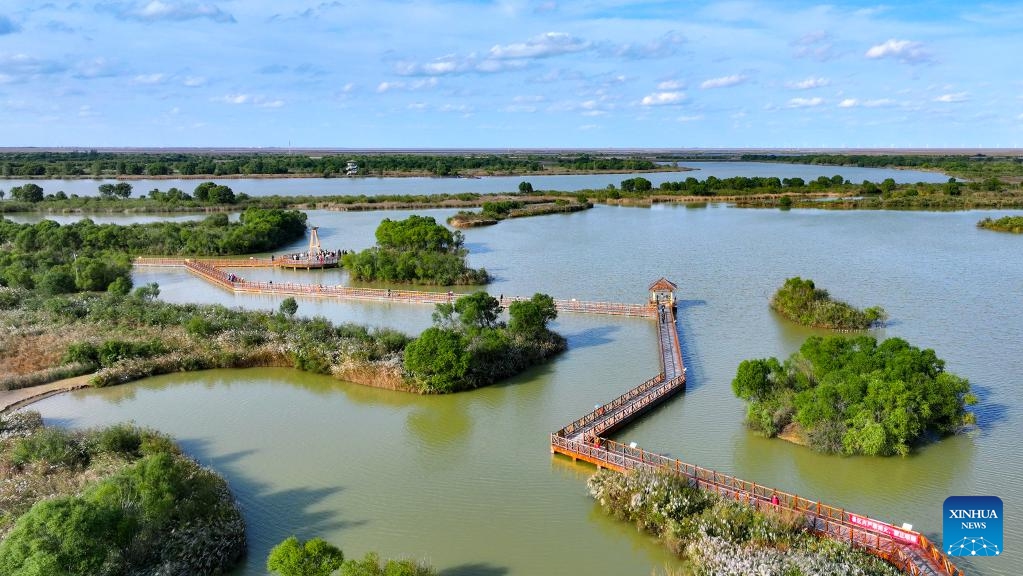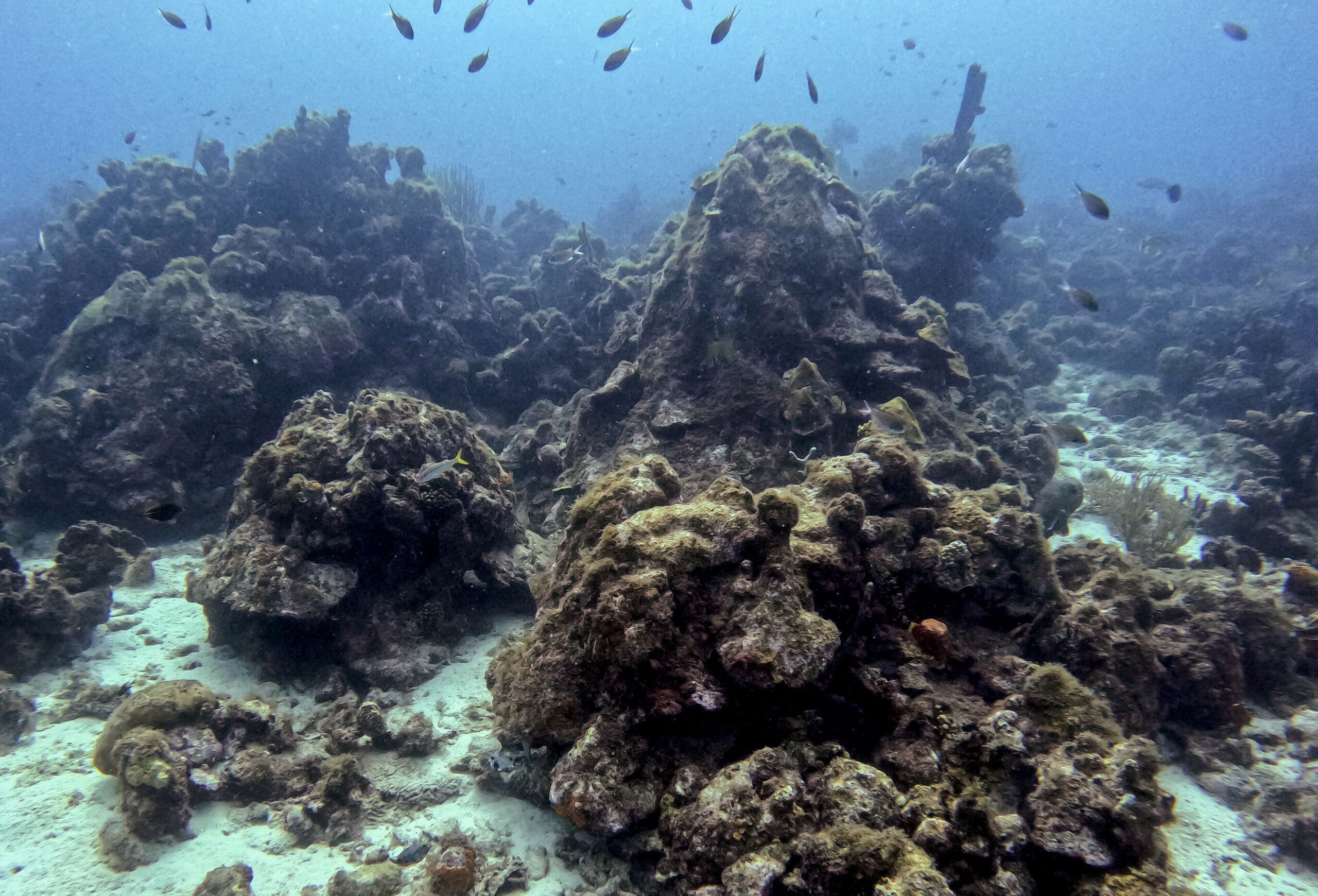Canada: marine refuge a milestone for Indigenous-led conservation – Oceanographic Magazine

Report on the Establishment of Indigenous-Led Marine Refuges in Haida Gwaii and Alignment with Sustainable Development Goals
Executive Summary
- A partnership between the Council of the Haida Nation and Fisheries and Oceans Canada has resulted in the formal establishment of two marine refuges, G̱aw Ḵáahlii and X̲aana K̲aahlii, in the waters of Haida Gwaii.
- Covering a combined area of 29.58 square kilometres, this initiative represents a significant advancement in Indigenous-led conservation and contributes directly to multiple Sustainable Development Goals (SDGs).
- The project is a key outcome of long-term collaboration, advancing national reconciliation efforts and Canada’s international marine protection commitments, with a primary focus on SDG 14 (Life Below Water) and SDG 17 (Partnerships for the Goals).
Initiative Overview and Objectives
The establishment of the G̱aw Ḵáahlii and X̲aana K̲aahlii Marine Refuges is founded on principles of shared stewardship and Indigenous governance. The core objectives are aligned with global sustainability targets.
- Ecological Protection: The primary goal is to safeguard vital marine ecosystems, including critical habitats for salmon, herring, seabirds, and harbour seals, thereby supporting marine biodiversity.
- Socio-Cultural Aims: The initiative is designed to support local food security for the Haida people and ensure the continuity of their cultural practices, which are intrinsically linked to the marine environment.
- Indigenous Governance: The refuges will be co-managed by the Council of the Haida Nation and Fisheries and Oceans Canada, utilizing traditional Haida marine knowledge to inform conservation strategies.
Contribution to Sustainable Development Goals (SDGs)
This conservation initiative provides a tangible example of progress toward several key SDGs through its integrated approach to environmental, social, and governance issues.
- SDG 14: Life Below Water
- The designation directly addresses Target 14.5 by conserving coastal and marine areas through effective management.
- It contributes to Canada’s national goal to protect 30% of its marine and coastal areas by 2030, a key component of the global biodiversity framework.
- By protecting critical habitats, the project supports Target 14.2, which aims to sustainably manage and protect marine and coastal ecosystems.
- SDG 17: Partnerships for the Goals
- The collaboration exemplifies Target 17.17 by fostering an effective public-private and civil society partnership between an Indigenous government and a federal government body.
- This model of reconciliation and shared stewardship is a powerful mechanism for achieving common conservation goals.
- SDG 16: Peace, Justice and Strong Institutions
- The initiative is a concrete action toward fulfilling Canada’s commitments under the United Nations Declaration on the Rights of Indigenous Peoples Act.
- It establishes an inclusive and effective co-management governance model (Target 16.7), ensuring Indigenous peoples have a central role in decision-making processes concerning their ancestral territories.
- SDG 2: Zero Hunger
- By safeguarding marine biodiversity and the health of fish stocks like salmon and herring, the refuges directly support local food security for the Haida Nation, aligning with Target 2.1.
- SDG 10 & SDG 11: Reduced Inequalities & Sustainable Communities
- The project empowers Indigenous-led conservation, promoting the social and political inclusion of the Haida Nation (Target 10.2).
- It actively works to safeguard the cultural heritage and continuity of the Haida people, contributing to Target 11.4.
Broader Context and Implications
- The new refuges are an integral part of the Haida Gwaii Marine Plan and the broader Northern Shelf Bioregion Marine Protected Area Network.
- This action represents tangible progress under the Great Bear Sea Project Finance for Permanence, a major Indigenous-led conservation finance initiative.
- The announcement underscores a deepening commitment to collaborative conservation models that integrate Indigenous knowledge and governance as a foundation for achieving global sustainability targets.
Sustainable Development Goals (SDGs) Addressed
-
SDG 14: Life Below Water
- The article is centered on marine conservation through the establishment of two marine refuges, G̱aw Ḵáahlii and X̲aana K̲aahlii. This directly addresses the goal of conserving and sustainably using the oceans, seas, and marine resources. The text explicitly mentions the aim to “safeguard vital ecosystems, including key habitats for all species of salmon, herring, seabirds, and harbour seals.”
-
SDG 16: Peace, Justice and Strong Institutions
- The initiative is described as a collaboration rooted in “reconciliation and shared stewardship.” The refuges will be “co-managed by the Council of the Haida Nation and Fisheries and Oceans Canada under the principles of Indigenous governance.” This highlights the development of effective, accountable, and inclusive institutions at all levels, particularly through the partnership between an Indigenous nation and the federal government. The article also references Canada’s commitments under the “United Nations Declaration on the Rights of Indigenous Peoples Act.”
-
SDG 17: Partnerships for the Goals
- The entire project is a partnership between the “Council of the Haida Nation and Fisheries and Oceans Canada.” The joint statement by the President of the Haida Nation and Canada’s Minister of Fisheries exemplifies a multi-stakeholder partnership to achieve sustainable development goals.
-
SDG 2: Zero Hunger
- The article states that the designation of the refuges aims to support “local food security” for the Haida people by protecting key habitats for species like salmon and herring, which are vital food sources.
Specific SDG Targets Identified
-
Target 14.5: Conserve coastal and marine areas
- The article directly connects the establishment of these marine refuges to Canada’s “broader national goal to protect 30% of marine and coastal areas by 2030.” This aligns with the global ambition to significantly increase the conservation of marine areas.
-
Target 14.2: Protect and restore ecosystems
- The primary purpose of the refuges is to “safeguard vital ecosystems” and protect “key habitats for all species of salmon, herring, seabirds, and harbour seals.” This directly corresponds to the target of sustainably managing and protecting marine and coastal ecosystems to avoid adverse impacts.
-
Target 16.7: Ensure responsive, inclusive, participatory and representative decision-making
- The co-management structure involving the Haida Nation and the Canadian government is a clear example of inclusive and participatory decision-making. The article emphasizes that the sites were identified through “traditional Haida marine knowledge,” further demonstrating the inclusion of Indigenous perspectives in governance.
-
Target 17.17: Encourage effective partnerships
- The collaboration is described as a “long-standing collaboration rooted in reconciliation and shared stewardship.” This formal partnership between a public institution (Fisheries and Oceans Canada) and a civil/Indigenous governing body (Council of the Haida Nation) is a direct application of this target.
-
Target 2.1: Universal access to safe and nutritious food
- By protecting marine ecosystems that are home to salmon and herring, the initiative directly supports “local food security,” which is a key component of ensuring access to sufficient and nutritious food for the Haida people.
Indicators for Measuring Progress
-
Indicator 14.5.1: Coverage of protected areas in relation to marine areas
- The article provides a specific, measurable indicator by stating the combined size of the new refuges: “29.58-square-kilometres.” This area contributes directly to the national goal of protecting 30% of marine areas by 2030.
-
Establishment of Co-Management Structures
- An implicit indicator for Target 16.7 is the formal establishment of the co-management agreement between the Council of the Haida Nation and Fisheries and Oceans Canada. This governance model serves as a measure of progress towards inclusive and participatory decision-making.
-
Protection of Key Species for Food Security
- While not a formal UN indicator, the article implies that the health and abundance of salmon and herring populations within the refuges can be used as a measure of success in supporting “local food security” for the Haida people, linking directly to Target 2.1.
SDGs, Targets, and Indicators Summary
| SDGs | Targets | Indicators |
|---|---|---|
| SDG 14: Life Below Water | Target 14.5: Conserve at least 30% of coastal and marine areas by 2030. | The establishment of 29.58-square-kilometres of marine refuges, contributing to Canada’s national goal. (Indicator 14.5.1) |
| SDG 14: Life Below Water | Target 14.2: Sustainably manage and protect marine and coastal ecosystems. | The designation of refuges to safeguard vital ecosystems and key habitats for salmon, herring, seabirds, and harbour seals. |
| SDG 16: Peace, Justice and Strong Institutions | Target 16.7: Ensure responsive, inclusive, participatory and representative decision-making. | The co-management of the refuges by the Council of the Haida Nation and Fisheries and Oceans Canada, guided by traditional Haida marine knowledge. |
| SDG 17: Partnerships for the Goals | Target 17.17: Encourage and promote effective public and civil society partnerships. | The formal, long-standing collaboration and joint statement between the Haida Nation and the Government of Canada. |
| SDG 2: Zero Hunger | Target 2.1: End hunger and ensure access to safe, nutritious and sufficient food. | The protection of vital ecosystems for species like salmon and herring, which directly supports local food security for the Haida people. |
Source: oceanographicmagazine.com
What is Your Reaction?
 Like
0
Like
0
 Dislike
0
Dislike
0
 Love
0
Love
0
 Funny
0
Funny
0
 Angry
0
Angry
0
 Sad
0
Sad
0
 Wow
0
Wow
0














































/environment-climate-change-and-health-(ech)/water-sanitation-hygiene-and-health-(wsh)/landfill-tuvalu-36092.tmb-1200v.jpg?sfvrsn=5c21fe40_1#)



.jpg.webp?itok=0ZsAnae9#)


























